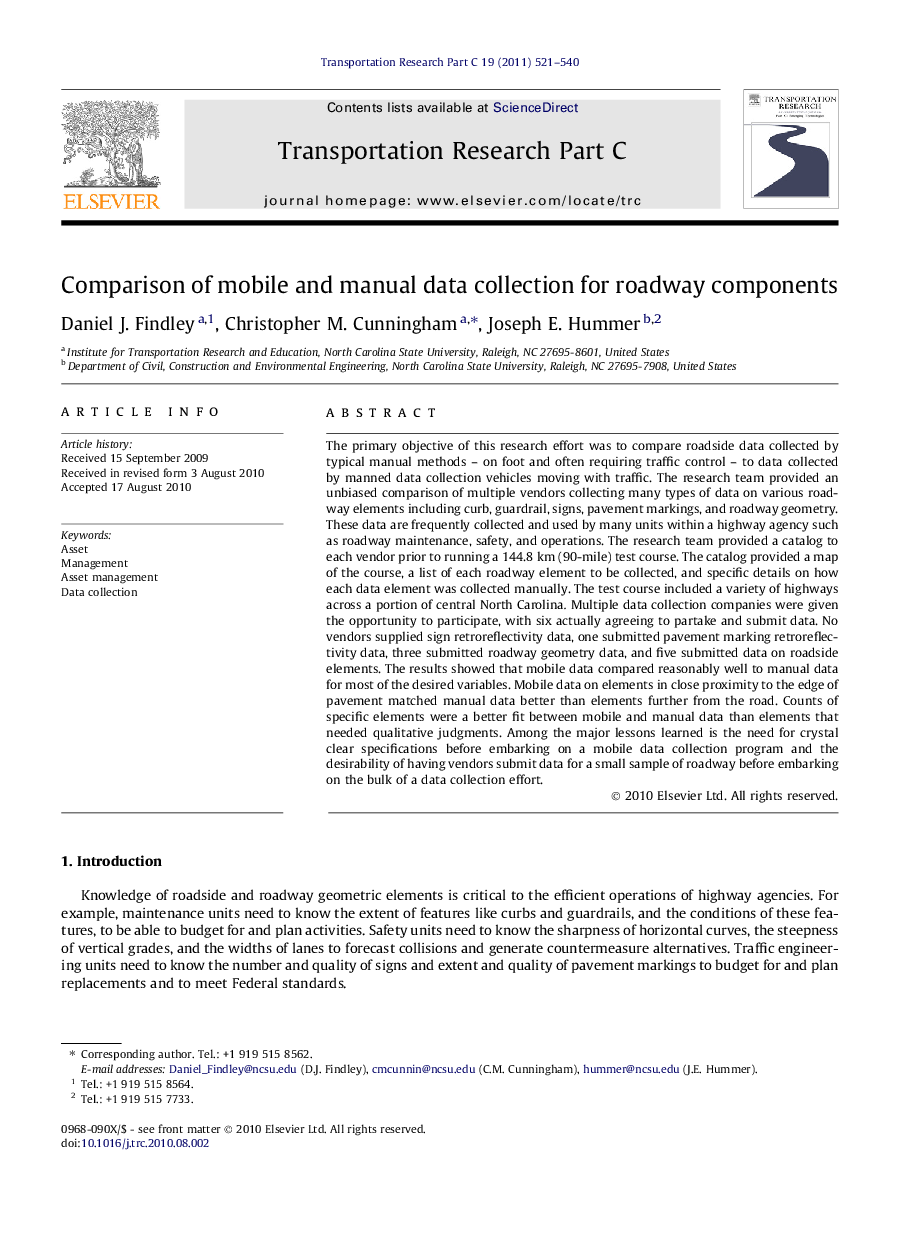| کد مقاله | کد نشریه | سال انتشار | مقاله انگلیسی | نسخه تمام متن |
|---|---|---|---|---|
| 526633 | 869165 | 2011 | 20 صفحه PDF | دانلود رایگان |

The primary objective of this research effort was to compare roadside data collected by typical manual methods – on foot and often requiring traffic control – to data collected by manned data collection vehicles moving with traffic. The research team provided an unbiased comparison of multiple vendors collecting many types of data on various roadway elements including curb, guardrail, signs, pavement markings, and roadway geometry. These data are frequently collected and used by many units within a highway agency such as roadway maintenance, safety, and operations. The research team provided a catalog to each vendor prior to running a 144.8 km (90-mile) test course. The catalog provided a map of the course, a list of each roadway element to be collected, and specific details on how each data element was collected manually. The test course included a variety of highways across a portion of central North Carolina. Multiple data collection companies were given the opportunity to participate, with six actually agreeing to partake and submit data. No vendors supplied sign retroreflectivity data, one submitted pavement marking retroreflectivity data, three submitted roadway geometry data, and five submitted data on roadside elements. The results showed that mobile data compared reasonably well to manual data for most of the desired variables. Mobile data on elements in close proximity to the edge of pavement matched manual data better than elements further from the road. Counts of specific elements were a better fit between mobile and manual data than elements that needed qualitative judgments. Among the major lessons learned is the need for crystal clear specifications before embarking on a mobile data collection program and the desirability of having vendors submit data for a small sample of roadway before embarking on the bulk of a data collection effort.
Research highlights
► Comparison of multiple vendors collecting many types of data on various roadway elements.
► Six actually agreeing to partake and submit data; no vendors supplied sign retroreflectivity data, one submitted pavement marking retroreflectivity data, three submitted roadway geometry data, and five submitted data on roadside elements.
► Results showed that mobile data compared reasonably well to manual data for most of the desired variables.
► Mobile data on elements in close proximity to the edge of pavement matched manual data better than elements further from the road.
► Among the major lessons learned is the need for crystal clear specifications before embarking on a mobile data collection program and the desirability of having vendors submit data for a small sample of roadway before embarking on the bulk of a data collection effort.
Journal: Transportation Research Part C: Emerging Technologies - Volume 19, Issue 3, June 2011, Pages 521–540